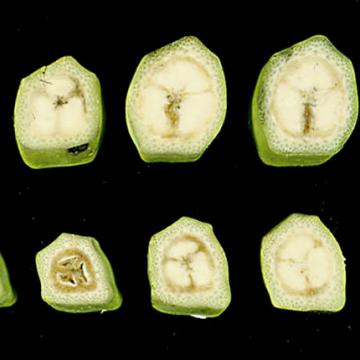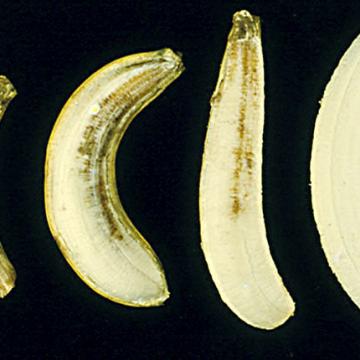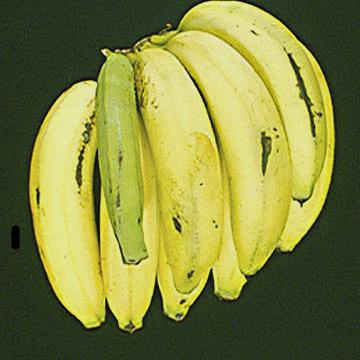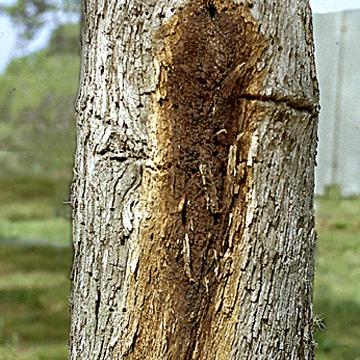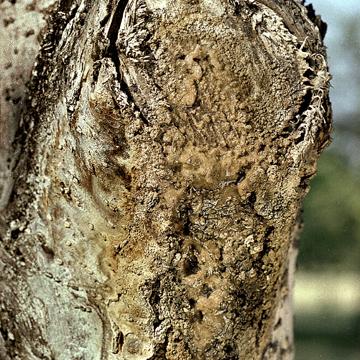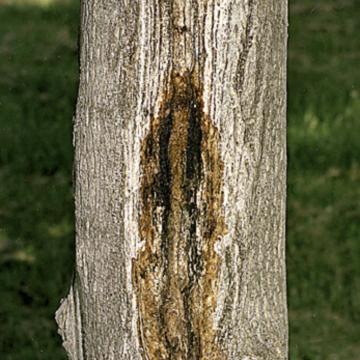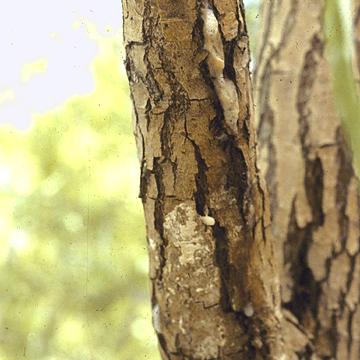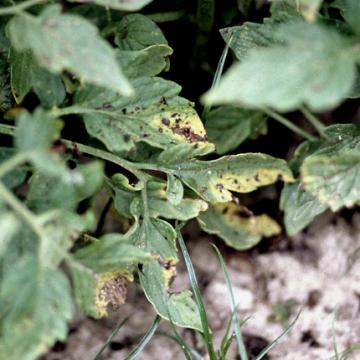DISEASE: Bacterial finger-tip rot
HOST: Banana
Cross sections of fruit with internal discoloration and rot. This disease is also known as Mokillo disease.
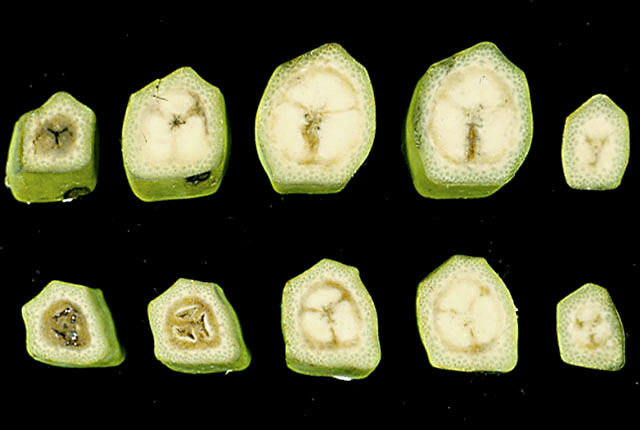
Bacterial finger-tip rot | Banana
DISEASE: Bacterial finger-tip rot
HOST: Banana (Musa sp.)
PATHOGEN: Burkholderia cenocepacia
PATHOGEN SYNONYM: Pseudomonas cenocepacia
SOURCE: I. Buddenhagen
DISEASE: Bacterial finger-tip rot
HOST: Banana
Longitudinal sections of fruit with internal discoloration and rot. Healthy (right).
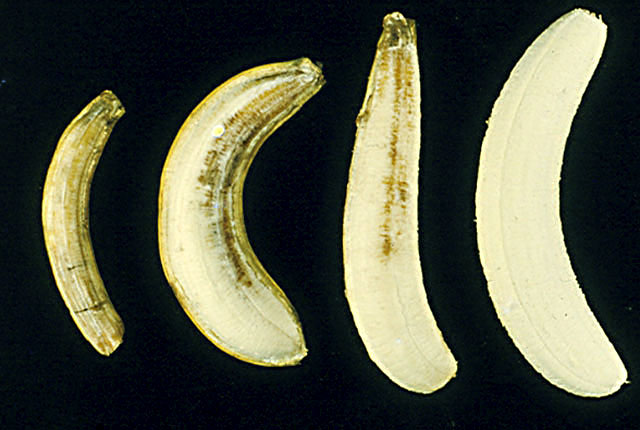
Bacterial finger-tip rot | Banana
DISEASE: Bacterial finger-tip rot
HOST: Banana (Musa sp.)
PATHOGEN: Burkholderia cenocepacia
PATHOGEN SYNONYM: Pseudomonas cenocepacia
SOURCE: I. Buddenhagen
DISEASE: Bacterial finger-tip rot
HOST: Banana
Diseased banana hand with external discoloration.
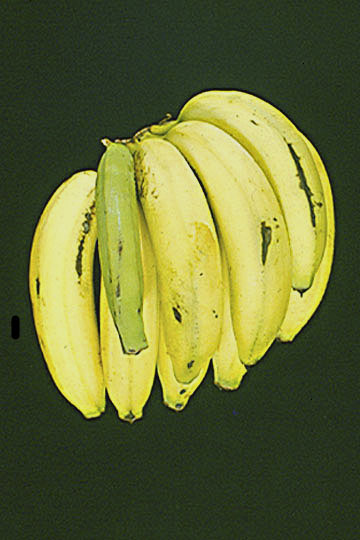
Bacterial finger-tip rot | Banana
DISEASE: Bacterial finger-tip rot
HOST: Banana (Musa sp.)
PATHOGEN: Burkholderia cenocepacia
PATHOGEN SYNONYM: Pseudomonas cenocepacia
SOURCE: I. Buddenhagen
DISEASE: Slime flux
HOST: Casuarina
Slime flux occurs on a number of tree species and is always associated with bacteria and yeast. However, the causal agent has not been identified.
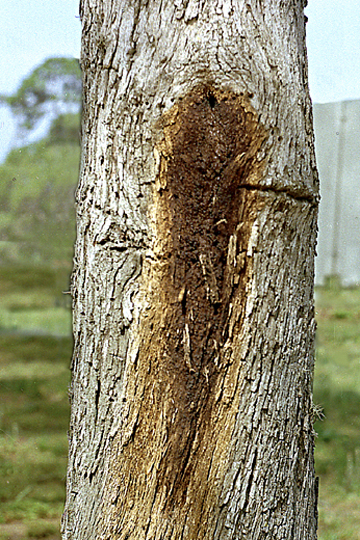
Slime flux | Casuarina
DISEASE: Slime flux
HOST: Casuarina (Casuarina equisetifolia)
PATHOGEN: Causal agent unknown
SOURCE: W. Sinclair
DISEASE: Slime flux
HOST: Elm
Although bacteria are associated with slime fluxes of many trees, the causal agents have not been identified.
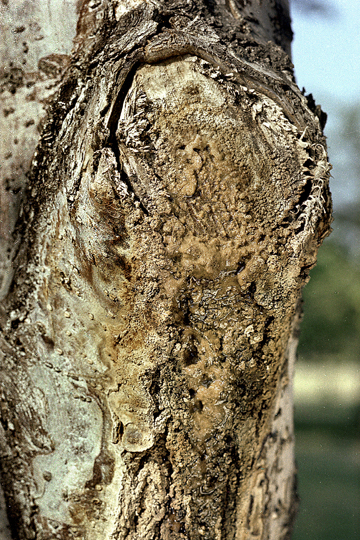
Slime flux | Elm
DISEASE: Slime flux
HOST: Elm (Ulmus pumila)
PATHOGEN: Causal agent unknown
SOURCE: W. Sinclair
DISEASE: Slime flux
HOST: Maple
The causal agent of slime flux has not been identified.
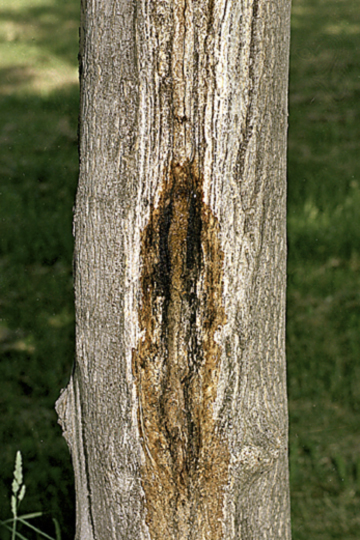
Slime flux | Maple
DISEASE: Slime flux
HOST: Maple (Acer saccharum)
PATHOGEN: Causal agent unknown
SOURCE: W. Sinclair
DISEASE: Slime flux
HOST: Willow
Foam at site of infection. Slime fluxes are common but the causal agent has not been identified.
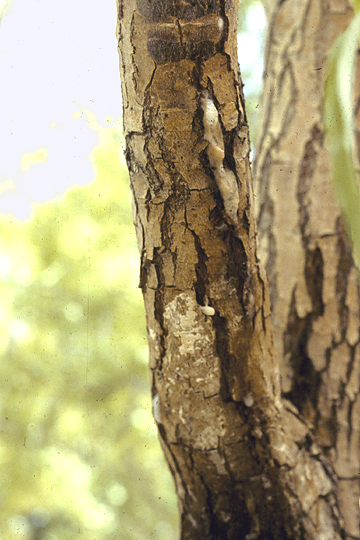
Slime flux | Willow
DISEASE: Slime flux
HOST: Willow (Salix sp.)
PATHOGEN: Causal agent unknown
SOURCE: S. Thomson
DISEASE: Syringae leaf spot
HOST: Tomato
Leaves with brown necrotic lesions and chlorotic margins. Symptoms vary greatly among cultivars. Some have black or brown lesions with bright yellow, chlorotic areas and others do not have yellowing.
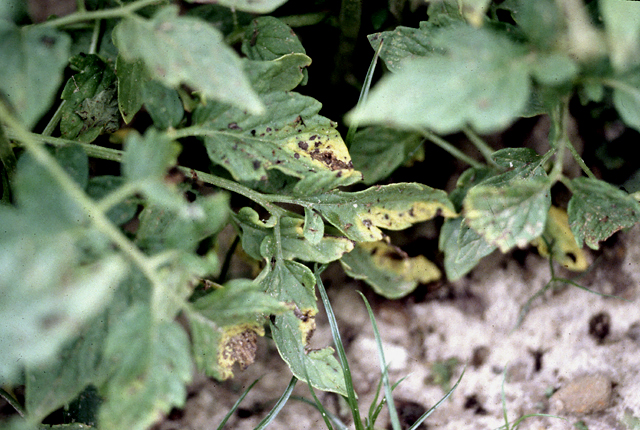
Syringae leaf spot | Tomato
DISEASE: Syringae leaf spot
HOST: Tomato (Lycopersicon esculentum)
PATHOGEN: Pseudomonas syringae pv. syringae
SOURCE: R. Gitaitis


